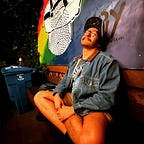The False Prophet on Cinema: Musings on The Night of the Hunter
11 min readFeb 11, 2020
*For the late Mr. Richard Coxsey*
Beware of false prophets, which come to you in sheep’s clothing, but inwardly they are ravening wolves. Ye shall know them by their fruits. Do men gather grapes of thorns, or figs of thistles? Even so…
